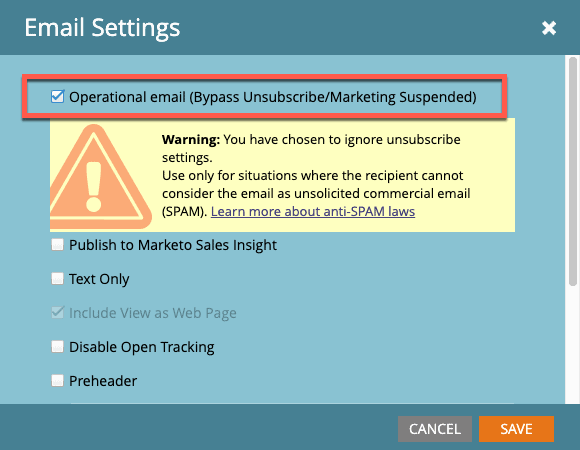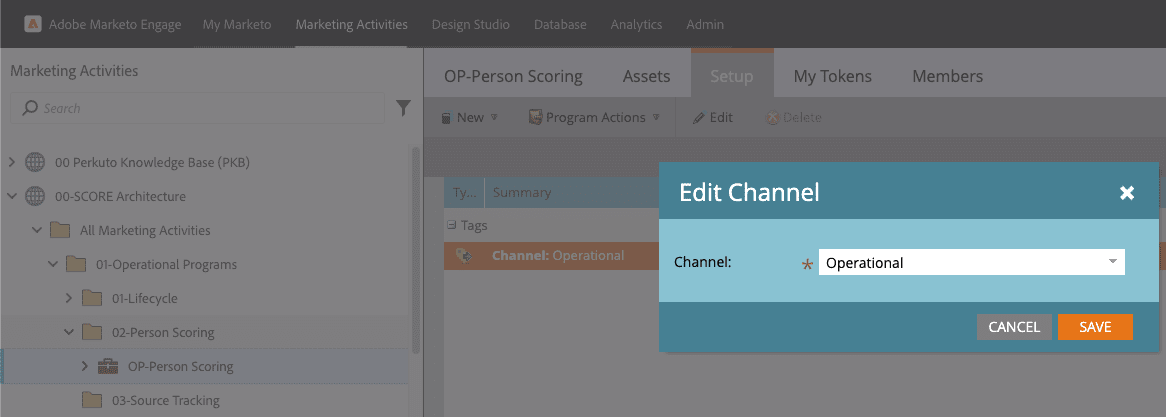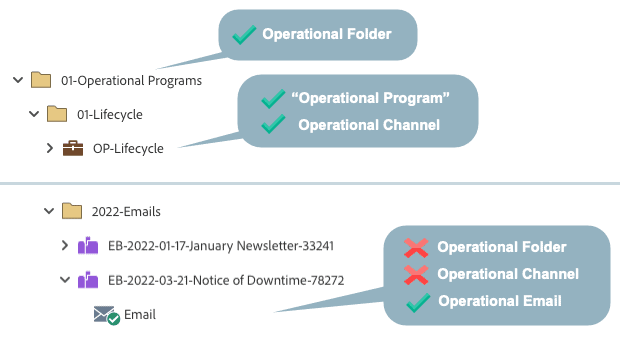The word “operational” is used in multiple contexts in Marketo, and it can get confusing. Here’s a primer to help you understand where, when, how, and why to use “operational.”
How Marketo experts use the word “operational”
Sending emails is a core functionality of Marketo, and the ability to specify Operational emails is powerful. When Operational is specified in an email’s settings, it will bypass unsubscribe and marketing suspended statuses. Because it is illegal to send emails to unsubscribed email addresses, this setting must be used carefully and accurately.
These emails can also be used for relationship messages, such as changes to a customer’s account, or notifications about downtime.
To be sure that Alert notifications to internal stakeholders reach intended recipients and avoid communication limits, set them to Operational as well. Examples are alerts to your sales team for Fast Track leads, or a monitoring alert you set for yourself.
In contrast, promotional emails should never be set to Operational, and promotional content should not be included in the text of Operational emails. Stay safely on the correct side of anti-spam laws – and community and business standards – by keeping your marketing emails separate, and providing a clear option to unsubscribe.
Operational emails are usually part of email send, gated content, or event marketing programs, rather than a program designated as “operational.”

Operational programs
There are four types of programs in Marketo:
- Event
- Engagement
- Default
Why do Marketo experts talk about “operational programs?”
A well-organized Marketo instance has data normalization and data management programs centralized in a high-level folder labeled “Operational.” Lifecycle and scoring are commonly known as “operational programs.” Other good examples include the global sync program that centralizes the sync functionality with CRM, and subscription center, compliance, and preference management programs.
When to use an operational channel
When establishing channels in a Marketo instance, it is helpful to have an Operational channel. The Operational channel is applied to the programs that maintain your Marketo instance and database, such as data management programs. These programs help in categorizing and understanding your audience, outside the marketing initiatives used to interact with them.
Using the Operational channel can help in reporting. You may choose to exclude activity that happens in these programs from regular Marketing Activity reports. Marketo’s advanced reporting tool, Revenue Cycle Explorer (RCE), excludes programs with an Operational channel designation.

Should all operational emails be in operational programs in the operational folder?
No! Even when set to Operational, most emails are regular business activities and should be organized in a Marketing Activities folder, using a folder structure based on business units, channels, and dates. Organize your folders and programs according to their purpose.
Here’s a cheat sheet to help visualize how “Operational” is used in different contexts within Marketo:

Creating order to foster creativity
Marketo instances with an ordered folder structure yield many benefits in team efficiency and capability. Everything can be found and optimized more quickly, including programs and campaigns, as well as any pesky problems that need to be tracked down. Newcomers can be trained up more quickly, even in a Marketo instance with complicated processes. And it sets you apart as a Marketo master.
We concur with this thought from Thomas Mann: “Order and simplification are the first steps toward the mastery of a subject.”
Does your organization need help achieving ROI from Marketo? Learn how the Marketo experts at MERGE can help. Contact us today!
